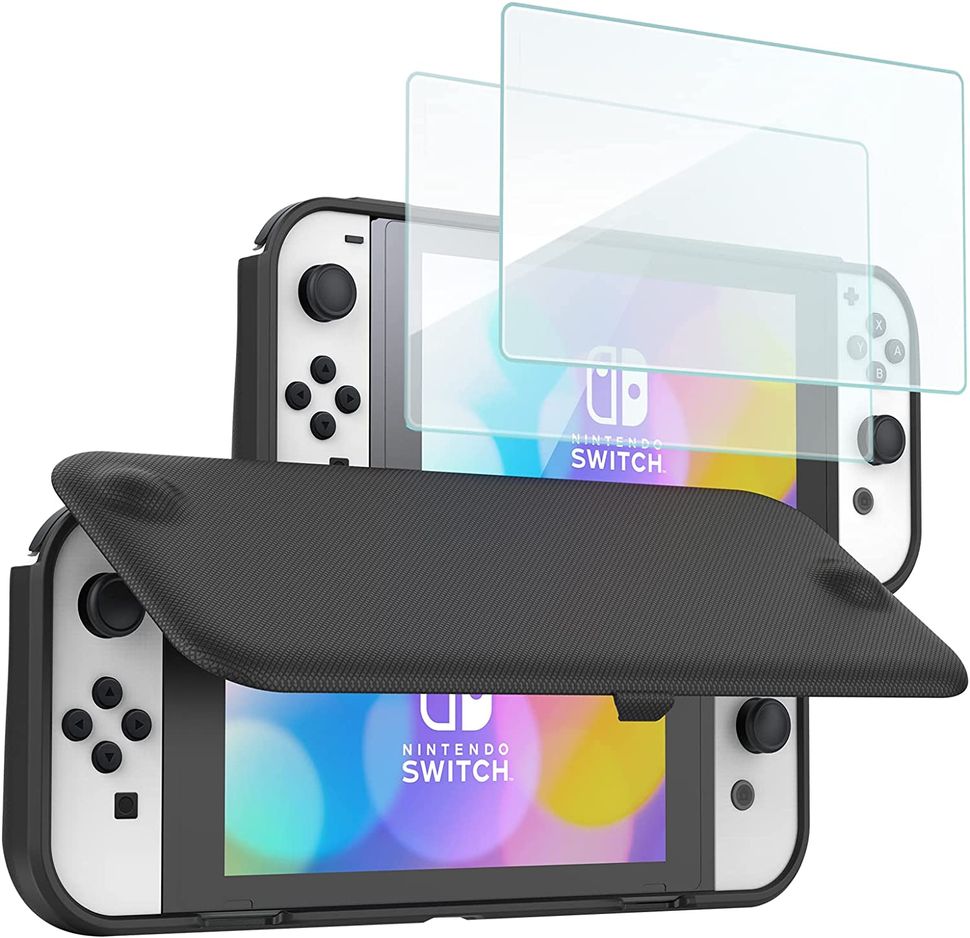
- NINTENDO SWITCH OLED VS NINTENDO DS LITE 720P
- NINTENDO SWITCH OLED VS NINTENDO DS LITE UPGRADE
- NINTENDO SWITCH OLED VS NINTENDO DS LITE PRO
- NINTENDO SWITCH OLED VS NINTENDO DS LITE PC
NINTENDO SWITCH OLED VS NINTENDO DS LITE PC
Games on the Switch are far smaller in terms of storage requirements than what we’re used to seeing on consoles or PC (to say the very least), but even so, more internal storage is always appreciated- and the Switch OLED has you covered on that front. Again, though, just like with the improvements made to the tablet’s screen, the better speakers in the tablet are yet more evidence that Nintendo is very much focusing on improvements to handheld gameplay with the Switch OLED.
NINTENDO SWITCH OLED VS NINTENDO DS LITE UPGRADE
It seems like the upgrade is a pretty simple one, with improved onboard speakers that will just lead to better audio in general. Nintendo is also touting audio enhancements in the Switch OLED, though curiously enough, they haven’t given many details on exactly how the tablet’s audio is better than the regular Switch or the Switch Lite. The base Switch’s kickstand is perhaps one of its bigger weaknesses, to the extent that many prefer to not use the system’s tabletop functionality at all because of it, so it’s great to see the Switch OLED tackling that problem with what’s clearly a big improvement. To anybody who’s ever used a Surface, this will be quite familiar. It’s much more sturdy and allows for much greater flexibility in how you want to place the system. While the base Switch has a rather flimsy kickstand, the Switch OLED has replaced that with a much wider backflap. In terms of physical design, the Switch OLED has one more significant improvement that is geared specifically for tabletop mode. Of course, for those who prefer the classic Neon Red and and Neon Blue Joy-Cons that the Switch has become almost synonymous with, Nintendo is selling those with the Switch OLED as well. The prevalent white colour theme seen in the docks extends to the tablet itself as well- more specifically, the Joy-Cons (which, sadly, are the exact same Joy-Cons as the base Switch other than the new colour scheme). It’s not a major reinvention by any means, and largely serves as a minor alteration of the current Switch model, but the changes are definitely noticeable. It’s not just the dock that has a new look- the Switch OLED itself also has a new design. Ultimate and Mario Kart 8 Deluxe’s multiplayer components aren’t magically going to become buttery smooth, but in console mode, they are at least going to be notably better. Given the fact that online play has been problematic in Switch, the inclusion of an ethernet port is an extremely welcome one. As is the case with the current Switch dock, the new Switch OLED dock will also be sold separately- and yes, it’s going to be compatible with the base Switch model as well.īeyond the cosmetic changes to the design and the colour, how else is the new dock different from the old one? There’s one crucial change to speak of- unlike the current dock, the Switch OLED dock has an ethernet port, replacing one of the three USB ports that the current dock has. In terms of functionality, the new dock is largely the same, but it’s got a new design, with the new white colour being the biggest change. Nintendo may have gone the handheld only route with the Switch Lite, but the Switch OLED, in spite of its screen making it abundantly clear that it’s still geared toward handheld mode improvements, is keeping up with the base model’s hybrid design.
NINTENDO SWITCH OLED VS NINTENDO DS LITE 720P
In terms of resolution, however, the Switch OLED still caps out at 720p, same as the Switch and the Switch Lite- though honestly, 720p is more than enough for a 7 inch screen. As a result, the Switch OLED’s screen is 7 inches, as opposed to the 6.2 inch screen of the base Switch, and the 5.5 inches of the Switch Lite. The Switch OLED’s size is the same as the base Switch, but its screen is bigger, with the bezels being removed. Another big change is its size- which is one thing the leaks did get right about the system. The screen being OLED instead of LED isn’t the only way it’s improving with the Switch OLED. As anyone who’s used an OLED screen will tell you, that’s a pretty big improvement. The base Switch and Switch Lite both use an LCD screen, but with an OLED screen, the Switch OLED is promising a more vibrant screen with sharper image quality and brighter colours. I mean, it’s called the Switch OLED model, so it’s pretty clear what the flagship feature of the system is. The biggest improvement in the new Switch model is, of course, its new screen. With the Switch OLED launching in just a few months, here, we’re going to talk about the biggest ways it differs from the base Switch model.

NINTENDO SWITCH OLED VS NINTENDO DS LITE PRO
No, it’s not the 4K-ready DLSS-feature Switch Pro leaks claimed it was going to be, and that’s surely disappointing- but get past that disappointment, and there’s a fair bit in the device that looks cool.

The Nintendo Switch OLED might not be the big Switch upgrade we’d all been hoping it would be, but there’s still plenty of improvements that Nintendo is making to the Switch hardware with it.


 0 kommentar(er)
0 kommentar(er)
